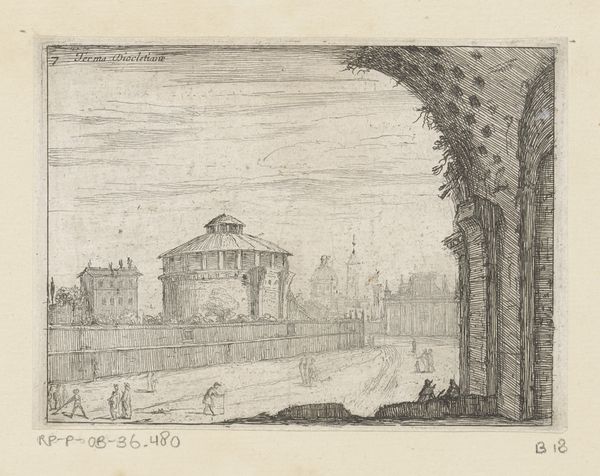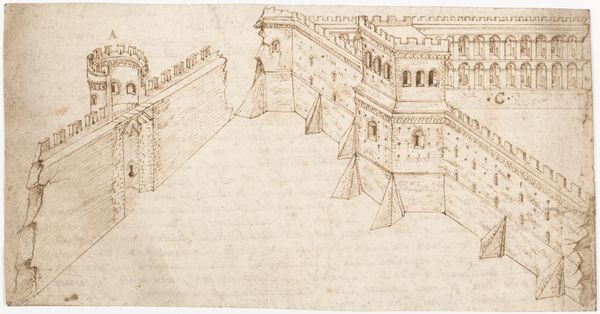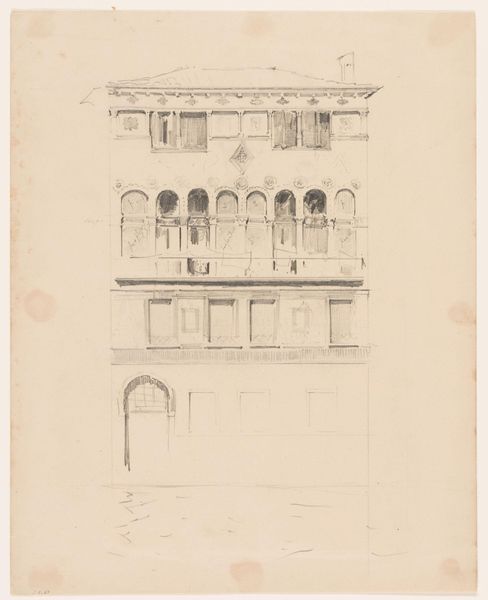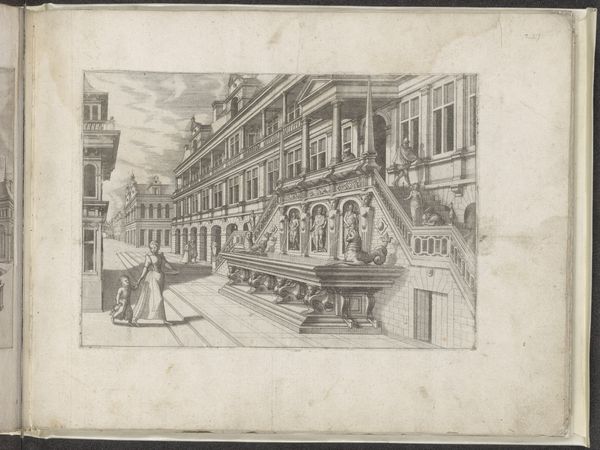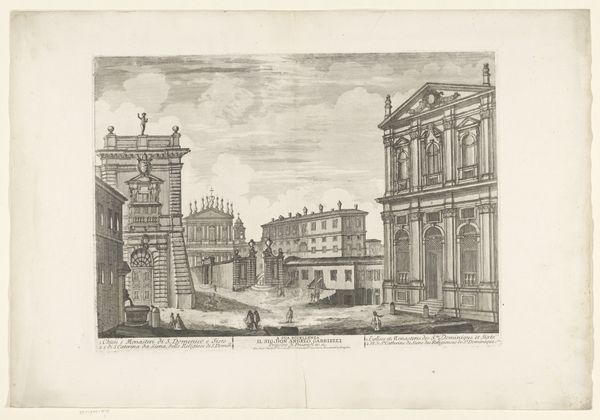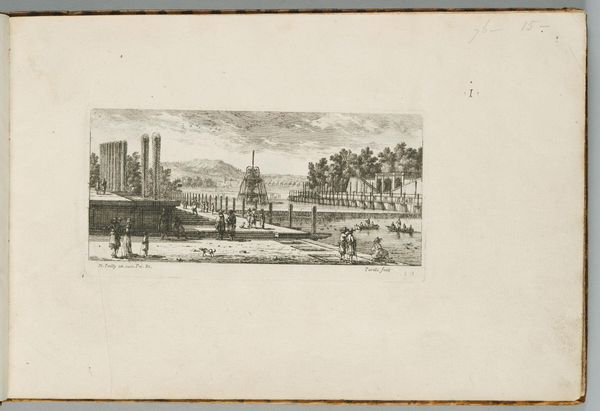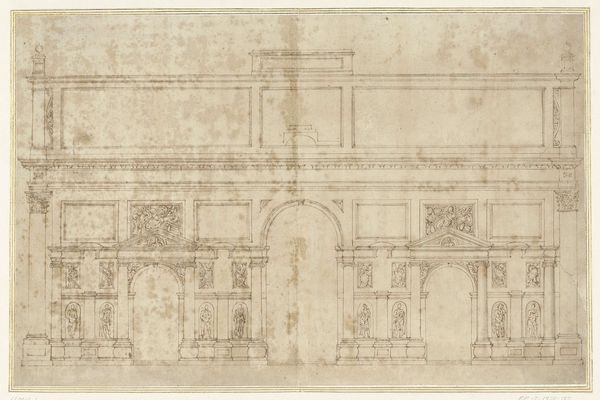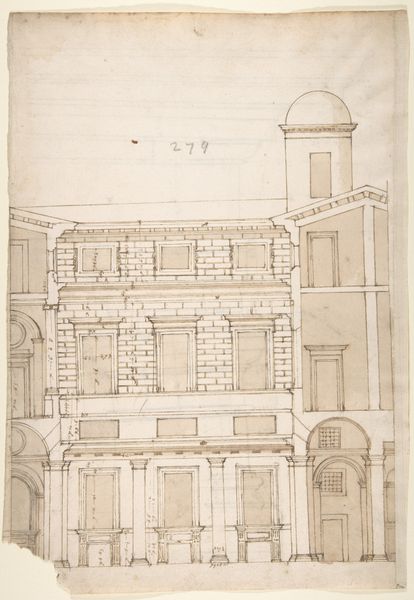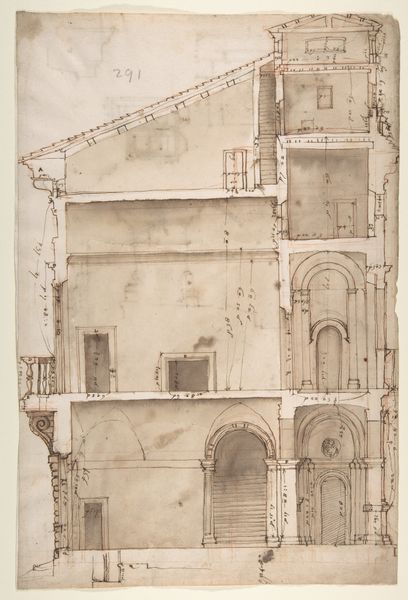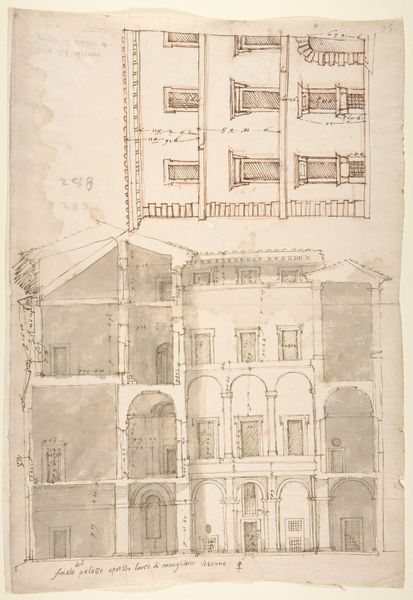
drawing, paper, ink
#
drawing
#
baroque
#
landscape
#
perspective
#
paper
#
ink
#
cityscape
#
watercolor
Dimensions: height 389 mm, width 491 mm
Copyright: Rijks Museum: Open Domain
Curator: This drawing by Lievin Cruyl, created in 1664, is titled "View in Rome of the Colosseum and the Arch of Constantine." Executed in ink on paper, it presents a meticulously observed cityscape. Editor: My first impression is... faded grandeur. The muted tones evoke a sense of history weighed down by time. There’s a melancholic beauty in these crumbling empires, captured through Cruyl’s perspective. Curator: Indeed. Note how Cruyl employs a split composition. On the left, we see fragmented ruins, leading the eye toward the Arch of Constantine. The right segment focuses on the Colosseum, framed by what appears to be a portico. This division highlights the contrast between intimate foreground observation and expansive urban vista. Editor: It feels theatrical, almost staged. That figure standing on the portico looks like an actor about to deliver a soliloquy about the rise and fall of civilizations. I find myself wondering what he is thinking. Curator: The figure serves as a repoussoir, a device drawing the viewer deeper into the pictorial space. But more crucially, observe the rendering of depth through precise linear perspective, effectively integrating architecture and landscape. Cruyl's manipulation of form creates an organized, rationally structured space. Editor: While you're mapping lines and planes, I’m lost in the poetry of those soft ink washes! Look at the way the light delicately touches the Colosseum, softening the sharp edges and blurring reality with a painterly effect. There’s an echo of epic stories embedded in the brushstrokes. Curator: The ink medium contributes a quality of detachment; Cruyl seems more interested in recording than in emotionally engaging with his subject matter. He favors scientific precision, an approach we find exemplified in the engravings documenting architectural renovations of his period. Editor: Perhaps. Yet there is undeniable passion behind this. It’s like finding a secret message scrawled on the back of a technical diagram – a quiet ode to beauty even amid objective measurements. Curator: It certainly provides an invaluable insight into the historical topography of 17th-century Rome. Editor: Ultimately, Cruyl's historical viewpoint gives way to a compelling moment of reflection on human impact on a landscape. Curator: A powerful observation indeed, lending a poignant depth to Cruyl's architectural panorama.
Comments
No comments
Be the first to comment and join the conversation on the ultimate creative platform.
